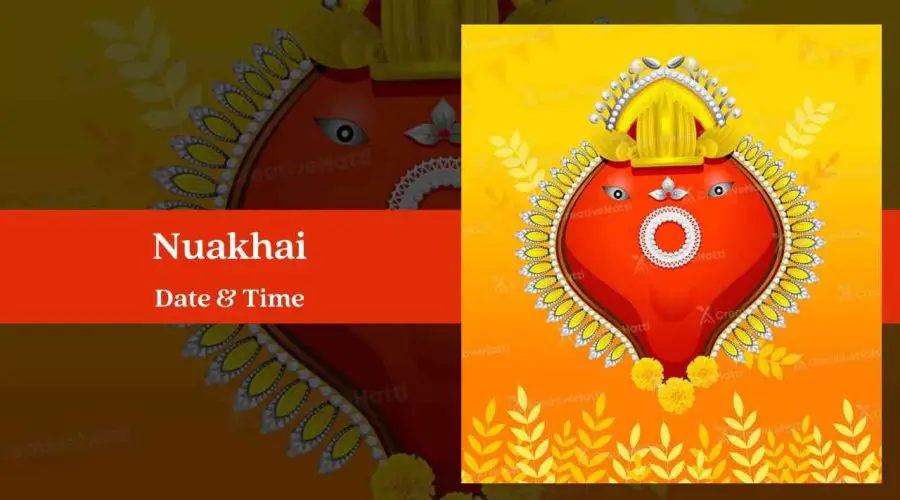Nuakhai 2023 Date, Time, Rituals & Celebrations
Nuakhai is an annual harvest festival celebrated in Odisha on Bhadraba Shukla Panchami Tithi, the day after Ganesh Chaturthi. This day is regarded as one of the most significant and fortunate days. Nua means new and Khai means food, so the residents of western Odisha present the Devi with recently cut food. This festival is primarily observed in the states of West Odisha and Jharkhand. This festival is also an important tribal celebration.
Nuakhai is centered on expressing gratitude for sustenance. Nuakhai, a significant agricultural festival, reflects the cultural diversity and heritage of India. It is also known as ‘Nuakhai Bhetghat’ and ‘Nuakhai Parab’.
Nuakhai Date 2023
Wednesday, 20 September 2023
Celebrations on Nuakhai
- A new harvest, or nabanna, is presented to Maa Samaleswari, the western Odisha deity. Prasad is prepared for the devi at the residence of the chief cleric.
- After offering Nabanna to devi Samaleshwari, the food is distributed to the people, and they consume it collectively.
- People prepare delicious food and commemorate this festival with great pomp and circumstance after completing all rituals.
- The rituals are performed initially in the temple of the local or village deity. People then worship in their respective homes and perform rituals to their household deity and Lakshmi, the Hindu deity of fortune.
- On this day, all family members don new clothes, greet one another with affection, and receive blessings from the eldest members of the family. This ceremony is called
- Nuakhai Juhar. Nuakhai festival is a symbol of Sambalpuri culture and serves as a reminder to the people of Odisha of the significance of agriculture.
- Nuakhai is a regional holiday in the state of Odisha, India.
Significance of Nuakhai Festival
The origins of the Nuakhai festival can be traced back to the Vedic period, when the Panchajanya described the five essential annual activities of an agrarian society. Before birds or animals consume the first crops, they are traditionally harvested and offered to the mother deity with great reverence. However, the Nuakhai oral tradition dates back to the 12th century A.D., when this festival became a symbol of Sambalpuri culture and heritage. The first Chauhan Raja Ramai Deo of Bolangir district in Western Odisha celebrated the Nuakhai festival to promote agriculture in order to generate a surplus and maintain the state’s economy.
Typically, the village headman or cleric would select a date for Nuakhai, which evolved into a socio-religious celebration in the entire Kosal region under the patronage of the royal families.
Odisha’s settled tribal farmers and caste-Hindu communities have transformed Nuakhai into an agricultural celebration. Since rice is the primary food in Odisha, it is believed to give its inhabitants hope and determine their fate. As a result, the new rice harvest is also regarded as an auspicious occasion, as cultivators reap the benefits of their labour.

